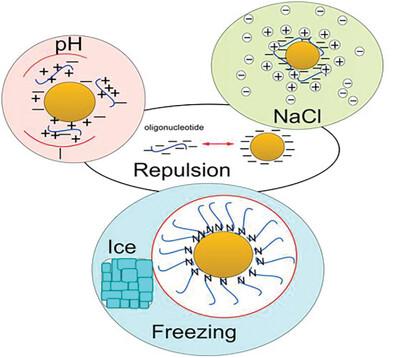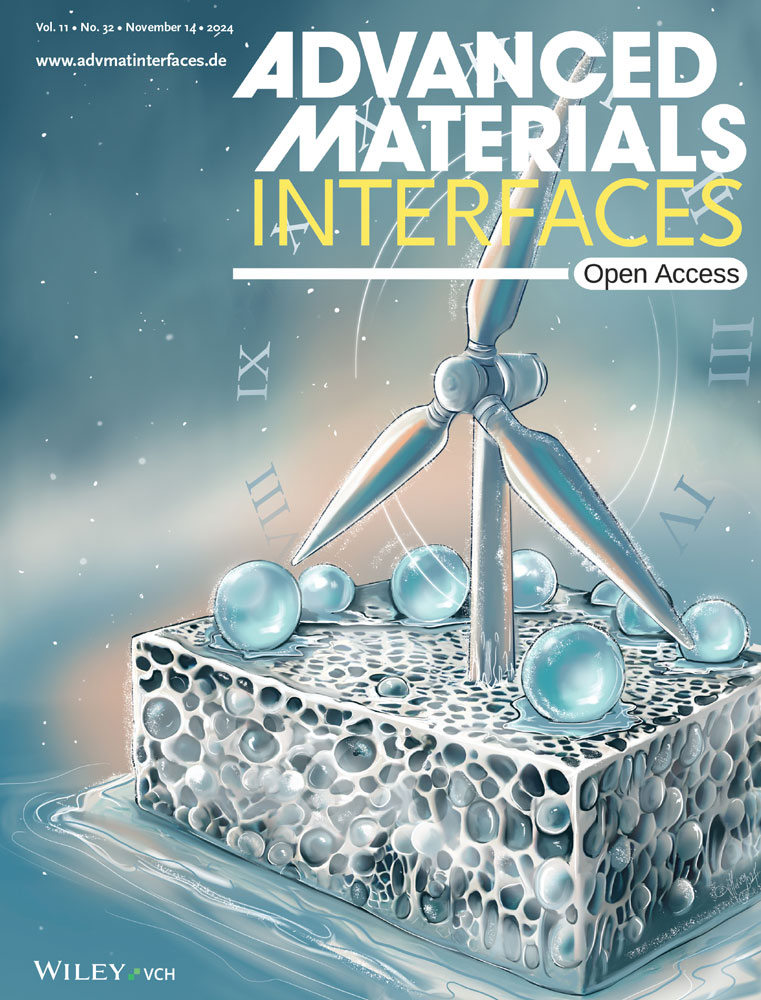寡核苷酸与金纳米粒子的相互作用:静电力和范德华力之外的因素
IF 4.3
3区 材料科学
Q2 CHEMISTRY, MULTIDISCIPLINARY
引用次数: 0
摘要
在开发直接 SERS 检测作为疾病生物标记物的寡核苷酸的过程中,对短模型寡核苷酸在金纳米粒子(GNPs)上的吸附进行了基础研究。研究发现,溶液条件的变化对寡核苷酸与 GNPs 的结合方式有深远影响。据推测,这种结合现象是由以下几个因素造成的:碱基组成、链方向性、寡核苷酸与 GNPs 结合或进行链间组装的竞争等。除这些因素外,特定溶液条件下单个碱基的特性(如质子化或去质子化)也会影响寡核苷酸链与 GNPs 结合的方式。今后,利用这一认识可以帮助开发基于 SERS 的直接传感方法,通过识别疾病基因生物标志物的突变来检测疾病。基于目前的假设,我们提出了需要填补的知识空白和未来的研究方向,以便更好地理解这些吸附过程并优化直接 SERS 生物传感。本文章由计算机程序翻译,如有差异,请以英文原文为准。

Interaction of Oligonucleotides with Gold Nanoparticles: Factors Beyond Electrostatic and Van‐Der Waals Forces
Motivated by the development of direct SERS for the detection of oligonucleotides as disease biomarkers, fundamental study is conducted for the adsorption of short model oligonucleotides onto gold nanoparticles (GNPs). It is observed that the variation in solution conditions has a profound effect on the way in which oligonucleotides bind to GNPs. The binding phenomenon is hypothesized to be a contribution of several factors: base composition, strand directionality, competition of oligonucleotides to bind to GNPs or undergo inter‐strand assembly, among others. In addition to these factors, the properties of the individual bases in the given solution conditions (such as protonation or deprotonation) also affect the way in which the oligonucleotide strand binds to GNPs. In future, using this understanding could aid in developing direct SERS‐based sensing methods for disease detection through identification of mutations in genetic biomarkers of disease. Based on the present hypothesis, knowledge gaps to fill and future research directions are suggested, to better understand these adsorption processes and optimize direct SERS biosensing.
求助全文
通过发布文献求助,成功后即可免费获取论文全文。
去求助
来源期刊

Advanced Materials Interfaces
CHEMISTRY, MULTIDISCIPLINARY-MATERIALS SCIENCE, MULTIDISCIPLINARY
CiteScore
8.40
自引率
5.60%
发文量
1174
审稿时长
1.3 months
期刊介绍:
Advanced Materials Interfaces publishes top-level research on interface technologies and effects. Considering any interface formed between solids, liquids, and gases, the journal ensures an interdisciplinary blend of physics, chemistry, materials science, and life sciences. Advanced Materials Interfaces was launched in 2014 and received an Impact Factor of 4.834 in 2018.
The scope of Advanced Materials Interfaces is dedicated to interfaces and surfaces that play an essential role in virtually all materials and devices. Physics, chemistry, materials science and life sciences blend to encourage new, cross-pollinating ideas, which will drive forward our understanding of the processes at the interface.
Advanced Materials Interfaces covers all topics in interface-related research:
Oil / water separation,
Applications of nanostructured materials,
2D materials and heterostructures,
Surfaces and interfaces in organic electronic devices,
Catalysis and membranes,
Self-assembly and nanopatterned surfaces,
Composite and coating materials,
Biointerfaces for technical and medical applications.
Advanced Materials Interfaces provides a forum for topics on surface and interface science with a wide choice of formats: Reviews, Full Papers, and Communications, as well as Progress Reports and Research News.
 求助内容:
求助内容: 应助结果提醒方式:
应助结果提醒方式:


